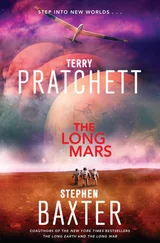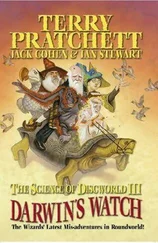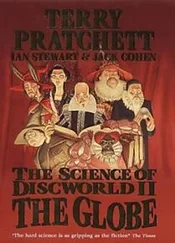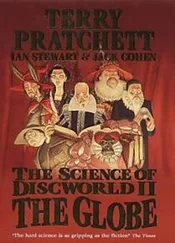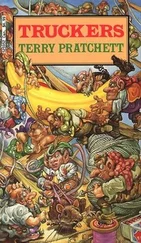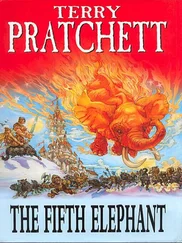Abrahams laughed. ‘ I’d walk away if you started counting out prime numbers to me. How boring …’
Jha leaned over the beetle on its table, a facemask over her mouth. The dissection had progressed a lot since Jha had last seen the specimen, but in the body’s interior she made out nothing but a kind of spongy mass, undifferentiated. ‘I’m just a lowly plant biologist, but even I can see we’re lacking in internal structure here. No obvious organs, no skeleton.’
Bowring shrugged. ‘We think the ceramic shell acts as a kind of exoskeleton, to support the weight. And there is a lot of weight; that spongy stuff is very high density. We’ve run various scans – MRI, sonar. There is structure in there, but it’s a kind of network with identifiable nodes, not a collection of organs like the human. The same kind of structure extends to the head, which seems to be more a sensor pod than a brain pan.’ He glanced at Abrahams. ‘Which could be significant. The human skull has grown over our evolutionary history, but even so there’s only so much room in there – and cerebral functionality has to share space with extensive areas devoted to sight processing, for instance.’
‘Hmm,’ Abrahams said. ‘Whereas if these creatures have their brains in their stomachs, so to speak—’
‘Room to grow. And if they are potentially very smart, they’re also very capable. Take a look at this.’ Bowring picked up a tablet, which showed an image of a bug’s manipulator arm. He swiped the image to magnify a section.
Jha saw that the ‘limbs’ terminated with splits, into twig-like appendages like fingers. But the ‘fingers’ bifurcated too, into still finer manipulators.
‘It goes on down to the nano scale,’ Bowring said. ‘We think these creatures could manipulate molecules.’
Abrahams said, ‘You call it a “creature”. We return to the point. Is it a creature, though? Is it biological?’
‘As Commander Jha said, opinion is divided on that. Animal or robot? My own theory, for what it’s worth, is that this is some kind of very advanced cyborg. And a very old design, to the point where the technology and the biology have merged, seamlessly. The manipulator substructures certainly look engineered. On the other hand the basic body plan looks like a throwback to some biological origin, to me. I mean, it’s not efficient. Why not have the whole body as a kind of modular robot? That way you could split off substructures, merge whole bodies to form larger structures … Certainly the capability to engineer on a molecular scale and upward gives them enormous manipulative power. Dr Abrahams, I think a beetle could make anything from almost any ingredient, given the right elemental composition.’
‘Including a copy of itself?’
‘Yes. We know these things have – reproduced.’
‘Using locally sourced materials – beetles grown from the substance of this world. I found that out myself. This is a von Neumann replicator, then. A machine capable of reproducing.’
‘Among other capabilities, yes. And when they combine they are clearly capable of tremendous feats, like their globe-spanning viaducts.’
‘But these creatures don’t come from Earth at all,’ Abrahams said. ‘I mean, from any of the worlds of the Long Earth.’
‘Right,’ Bowring said grimly. ‘And of course our best evidence for an extraterrestrial origin—’
‘Is the Planetarium.’
And to get there, to travel from the mundanity of New Springfield into the utterly unknown, the highly trained and heavily armed crew of a Navy twain had to submit to being stepped over hand in hand by local children, just as had Lobsang and Agnes from the beginning. Children who had figured out how to do this by themselves years ago.
MARGARITA JHA HAD stood beneath this alien sky several times since the twain’s arrival here at New Springfield. She’d never got used to it, and never expected to. The party of marines and scientists who were working here in the Planetarium, at a small base camp of tents and trestle tables – and a gun emplacement – were a welcome dose of the mundane. There was even a place for the local kids, the vital stepping link, with food and drink and books to read, even toys.
Once the party had stepped through, Colonel Jennifer Wang, who was in charge here, approached Jha with a brisk nod. Wang, the commander of the Cowley ’s small marine detachment, wore body armour and a facemask, though nobody had any proof that the latter was necessary; the Planetarium air was benign. ‘Commander Jha.’
‘All seems quiet.’
‘Yes, ma’am, just another routine day here at Bug Central. Bugs doing their bug stuff and leaving us alone. Step easy, Commander.’
‘Thank you, Colonel.’ As routine an exchange as they’d ever had, Jha thought. She’d known Wang for a long time, in fact, since they’d shipped together as junior officers on the Benjamin Franklin under Maggie Kauffman many years ago.
And yet – look where they were! You couldn’t escape the thought: what if the gossamer bridge they had just crossed to get here vanished as suddenly as, presumably, it had appeared? But here were these marines in this extraordinary place, and the young scientists from the Cowley doing their jobs, joshing and complaining about the food as if they were in some training camp in a Low Earth Iowa. Of course the local kids weren’t troubled at all. Jha suppressed her own gloomy speculations. What else could you do?
She went to rejoin Abrahams and Bowring, who were peering up at the crowded sky.
Bowring said, ‘It’s clear this world doesn’t belong . Not in this chain of worlds, our Long Earth. We’re a little light on mathematicians in this expedition,’ he said ruefully. ‘Damn brain-boxes tend not to travel well. But those we do have are suggesting we’re seeing some kind of flaw in the Long Earth. I mean, its structure in higher dimensions.’
‘It has to be something like that,’ Abrahams said.
‘I’m afraid we have no kind of handle on that yet, on how this could happen – or how to fix it. We’re going to need somebody a lot smarter than us to figure that out.’
‘Indeed,’ Abrahams said dryly. ‘But there’s no evidence that the beetles can step, is there? I mean, aside from the unique step that takes them from Gallery to Planetarium.’
‘None at all,’ said Jha severely. ‘But we’re keeping an eye on that. The Captain’s posted sentries in neighbouring worlds, stepwise. It seems that a handful of these bugs leaked into New Springfield from – someplace else. Well, from this place, wherever this is. The point is, now they’re using the resources of New Springfield’s Earth to breed like rats in a granary. We do not want these bugs to step over into another Long Earth world and start all over again. And, worse yet, spreading even further.’
‘A wise precaution.’
Bowring said, ‘But we are making some progress with our observations.’ He pointed at the sky, the crowding discs of the stars. Many of them were too bright to look at directly, like fine needles in the eye if you stared. ‘Evidently this is a world inside a globular cluster, a dense cloud of stars. The density tails off if you look through the crowd and further out. Clusters are big balls of stars, quite compact, and most of them orbit the centre of the Galaxy, each travelling as one big mass.’
‘But which cluster?’ Jha asked. ‘Have you made any progress with that?’
‘Actually, yes,’ he said with a grin. ‘Clusters differ in their age, their metallicity, their size, and we can measure such parameters. We think this is a globular cluster called M15 in our catalogues. Thirty thousand light years from Earth – well, that’s about as far away as the centre of the Galaxy. Very old but pretty big, a hundred thousand stars crammed into a space less than a couple of hundred light years across. The astronomers we have on board are pretty excited, actually. There’s believed to be a big black hole lurking at the centre of this cluster – a mash-up of dead old stars, I guess. They’re thrilled to be up close and personal with such a thing.’
Читать дальше

